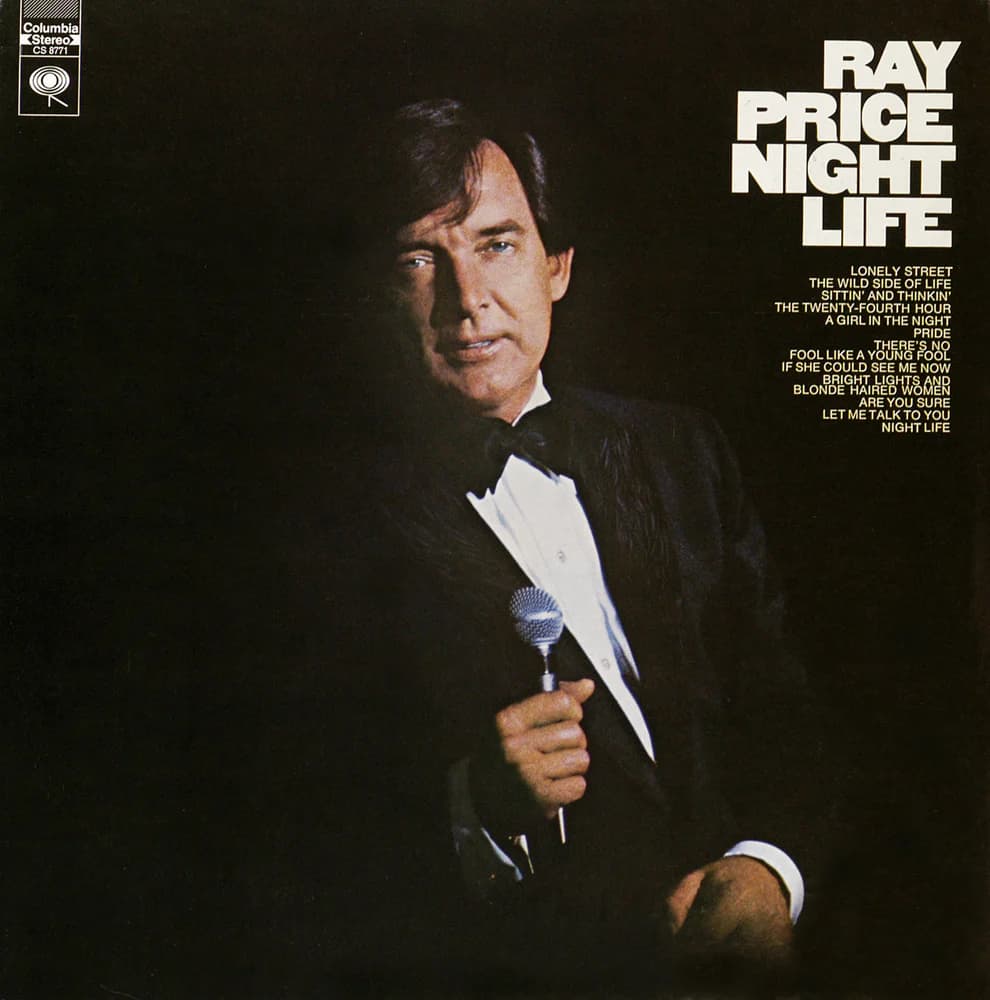
When Honky-Tonk Met High Society: The Birth of Country’s Classiest Melancholy
There are certain songs that don’t just occupy a space on the radio; they define a moment of change, marking the crossroads where a genre decides to evolve. For Country Music in the early 1960s, that definitive, pivotal moment was the emergence of Ray Price’s mesmerizing 1963 recording of “Night Life.” It was a daring move by a man who had built his reputation on the relentless, boot-stomping rhythm of the “Ray Price Shuffle,” but here, he traded the dance floor’s frenetic energy for the smoky, sophisticated solitude of a late-night cocktail lounge.
The history of this track is intertwined with a legendary friendship—and perhaps a legendary squabble. “Night Life” was penned by a young, struggling songwriter who would, of course, go on to become a global icon: Willie Nelson. Nelson was actually playing bass and singing backing vocals in Price’s famed touring band, The Cherokee Cowboys, around this time, and the song was directly inspired by his trips between his home in Pasadena, Texas, and his gig singing at the Esquire Ballroom in Houston. The story goes that Price purchased the song outright from Nelson for a mere $150, a sum that, in hindsight, is a hilarious footnote to music history, yet was a significant help to a young Willie at the time. Price released his version in June 1963 as a single from his groundbreaking album of the same name, Night Life. On the Billboard charts, the single peaked at No. 28 on the Hot Country Singles chart, a modest showing for a Ray Price record but one that utterly transformed his career trajectory. More importantly, the album Night Life became a spectacular success, hitting No. 1 shortly after Billboard launched its Country Album chart in January 1964, a profound achievement that validated Price’s new direction.
The meaning of “Night Life” is etched deep into the soul of anyone who has ever sought comfort in the fading glow of a bar sign. It is a slow, blues-infused meditation on loneliness, a haunting realization that the “night life” is a poor substitute for real, lasting love. The song portrays the neon-lit bar as a bittersweet refuge—a place where one can momentarily escape a broken heart by drowning sorrow in alcohol and the company of strangers. The lines speak of finding “happy times” only when the sun goes down, because during the day, the stark reality of loss is too much to bear.
What makes Price’s recording so utterly unforgettable, and why it resonates so deeply with older listeners, is the sheer elegance of the arrangement. This wasn’t the traditional fiddle-and-steel honky-tonk of the past; this was a lush, almost Frank Sinatra-esque crooner track. With a languid, jazzy tempo, a velvet-smooth vocal from Price, and the atmospheric, weeping pedal steel of Buddy Emmons, the song ushered in the “Countrypolitan” era. It was country music growing up, trading the dirt road for the city street, yet losing none of its heartbreaking emotion. It offered a sophisticated melancholy, the kind of song you would pour a stiff drink to and simply feel the weight of the world lift—or maybe, just settle in for the night. This was Ray Price—the former champion of raw honky-tonk—stepping out, daring to blend genres, and in doing so, creating a masterpiece that remains a perfect soundtrack to quiet regret and late-night reflection.